Tang Dynasty’s Peony Obsession: Clues from Flourished Peony

After the TV drama Flourished Peony aired, some people were left wondering: was peony really that popular during the Tang Dynasty? The drama depicts a booming peony economy that enables the female protagonist to become rich. It also shows peonies blooming in every household, drawing huge crowds. In fact, the drama isn’t exaggerating at all. After all, the poet Liu Yuxi once wrote, “Only the peony deserves to be called the true national beauty; when it blooms, it stirs the entire capital.” During the Tang Dynasty, the peony was hailed as the national flower and the king of flowers, truly the top trend – setter. In Tang – Dynasty society, a woman decked in elegant hanfu was considered “out – dated” if she didn’t adorn her hair with a large peony flower. In modern times, who would wear such a big, red flower on their head?
Ⅰ. The Craze for Wearing Peonies in Hair
Several thousand years ago, the Tang Dynasty was a period of remarkable economic prosperity, extensive territorial reach, and international acclaim. It was an incredibly glorious era. The peony seemed to be the perfect symbol of the flourishing Tang Dynasty. With its layers of petals, vibrant colors, and flamboyant bloom, the peony matched the Tang Dynasty’s grandeur perfectly.
During this time, rulers like Empress Wu Zetian and Emperor Xuanzong of Tang were extremely fond of peonies. Under their influence, from the imperial court to the common people, everyone was crazy about peonies. The wealthy and powerful lived a life of luxury, often hosting feasts and engaging in flower – viewing parties and flower – competition events. The peony, the symbol of the Tang Dynasty, was naturally the top choice for these flower – related activities. Although ordinary people couldn’t afford such extravagance, every household planted a few peony plants. Not doing so was considered unfashionable.
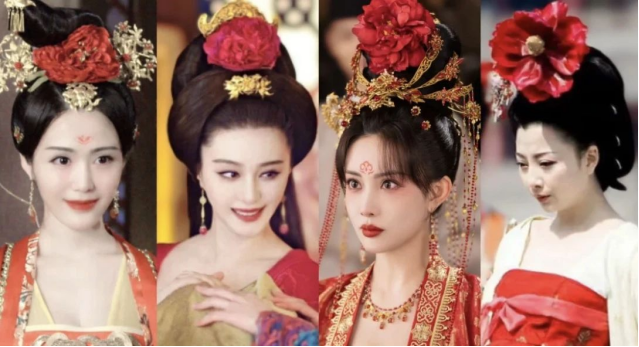
The Tang – Dynasty people’s penchant for adorning their hair with peonies was deeply rooted in their love for these flowers. Peonies were incredibly opulent and resplendent. Some rare varieties were truly invaluable. Thus, wearing an entire peony was seen as a way to flaunt one’s status. Moreover, once a peony was worn, there was no room for other flowers. This led to the prevalence of the custom of wearing a large peony on the head.
During the Tang Dynasty, the “big – haired” hairstyles left space on the head. As a result, a large flower didn’t look overly gaudy. The renowned painting Ladies with Head – Flowers (《簪花仕女图》) vividly demonstrates this.
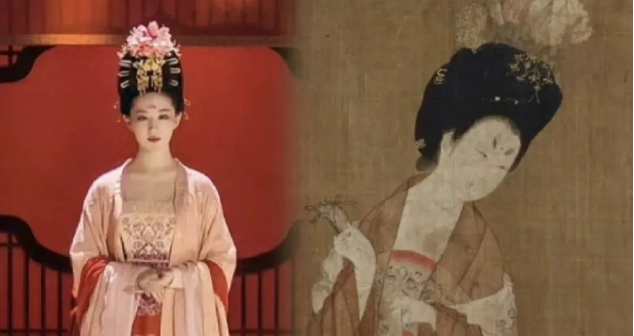
This flower – wearing custom reached its peak of fashion during the High Tang period. However, high – quality peonies were hard to come by. So, women also decorated their hair buns or temples with other fresh flowers like lotuses, crabapple blossoms, gardenias, and peonies as symbols of prosperity.
It wasn’t just women who wore flowers for their hanfu hairstyle; men did too. They usually pinned flowers to their futou hats. Some opted for understated small flower decorations, while others went for large, eye – catching blooms.
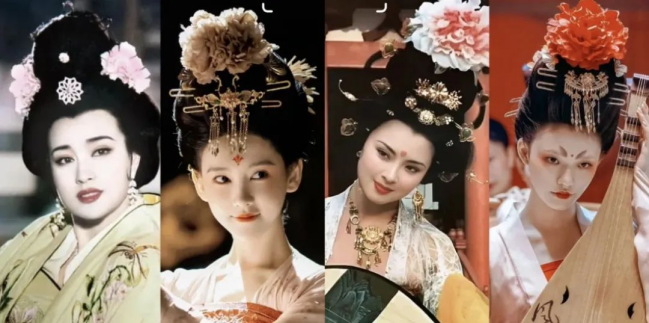
Ⅱ. Why the Obsession?
Just how much did the Tang – Dynasty people love peonies? Every late spring, nobles would compete to buy peonies. Perhaps due to this deep – seated love, even rare peony varieties were incredibly valuable. Supplementary Records of the History of the Tang Dynasty (《唐国史补》) states, “For over three decades, the nobility in the capital have adored peonies. Every late spring, people would go wild, considering it shameful not to indulge in the beauty of peonies. Even government officials and those around the imperial court planted peonies in temples and monasteries to make a profit. Some single peony plants were worth tens of thousands.” In the TV drama Flourished Peony, peonies are referred to as “golden treasures.” Since peonies require very specific growing conditions, they wilted after being moved by the father of the female protagonist’s husband. Peonies have high demands for soil, climate, and horticultural techniques. High – quality peonies, in particular, have a low yield. Therefore, during the Tang Dynasty, peonies were considered luxury items to some extent.
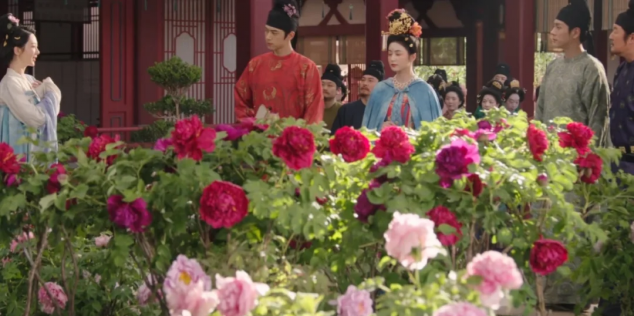
But why did the Tang – Dynasty people love peonies so much? Peonies are undeniably beautiful, yet with so many beautiful spring flowers, why did peonies stand out? The answer lies in the influence of the aristocracy. One theory is that sovereigns like Empress Wu Zetian and Emperor Xuanzong of Tang were extremely fond of peonies. Under their influence, a trend of adoring peonies emerged. Everyone, from nobles to commoners, was caught up in this peony – chasing craze. Another theory is that peonies were expensive and came in a wide variety of species, making them symbols of noble status at that time.

Poets even praised the peony’s “national beauty” to the skies, directly boosting its popularity. Li Bai wrote, “Clouds are like her dress and the flower her face; the spring breeze caresses the balustrade, and the dewdrops make her more radiant.” Liu Yuxi penned, “Only the peony deserves to be called the true national beauty; when it blooms, it stirs the entire capital.” Bai Juyi said, “For twenty days as the flowers bloom and fade, everyone in the city goes wild.” Pi Rixiu wrote, “It is lauded as the peerless beauty under the sky and possesses the most fragrant scent on earth.” If a poet didn’t have a poem about peonies, they were considered “outdated.”
Ⅲ. Additional Information
It’s worth mentioning that for ordinary people, it’s indeed a bit difficult to distinguish between peonies and herbaceous peonies with the naked eye. In simple terms, the biggest difference is that peonies are woody plants, while herbaceous peonies are herbaceous plants. Peony branches are stiffer than those of herbaceous peonies, and their leaves are larger and rounder. When you see a peony flower on the left, the leaves of the herbaceous peony are narrower, longer, thinner, and more glossy. It’s no wonder that people who don’t know the difference can easily get confused. Of course, herbaceous peonies are also wonderful. As the poem says, “The herbaceous peony is favored in spring; why should it envy the peony?”
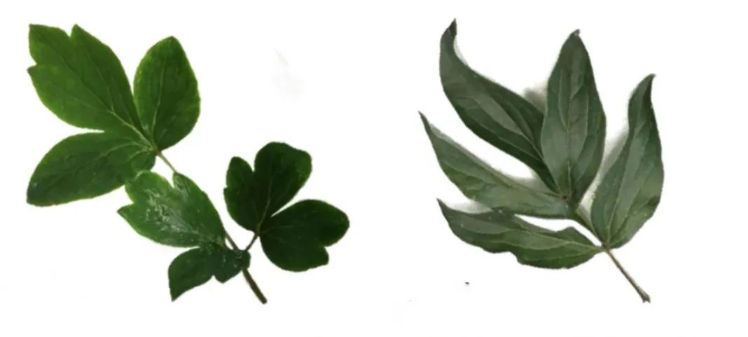
But as we all know, peonies are fresh flowers and can’t be worn year – round. So, did people stop wearing them during seasons when fresh peonies weren’t available? Not at all! Chinese ancestors crafted peony – themed flower crowns that could still be worn on the head. For example, in A Palace Concert and Ladies with Fans (《挥扇仕女图》), the flower crowns worn by noble ladies were made by layering various flower – shaped pieces. They were truly resplendent.
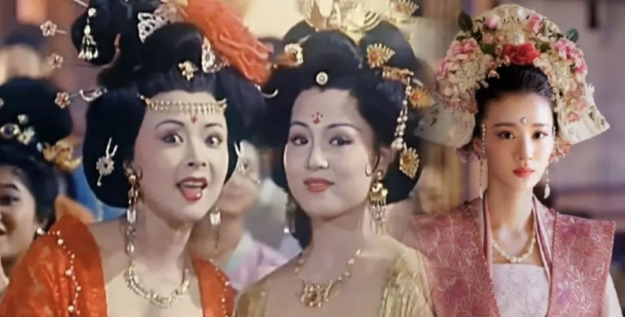
There are also peony patterns. Since fresh flowers are hard to preserve, peony – related patterns can be found on various paintings, artifacts, and Chinese traditional dress. These patterns, which we call peony patterns, symbolize wealth, prosperity, and high status. Their large size and vivid colors often represent fortune and rank.
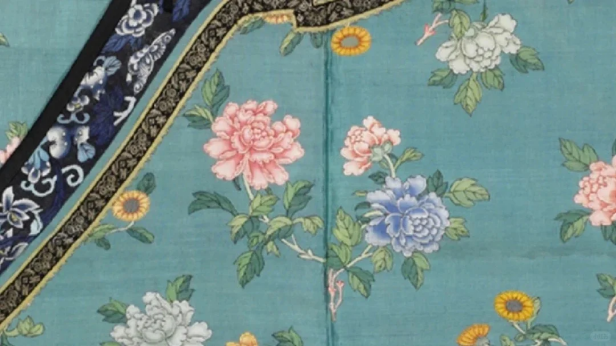
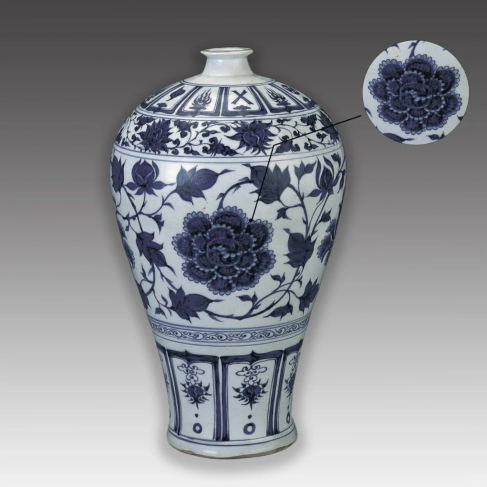
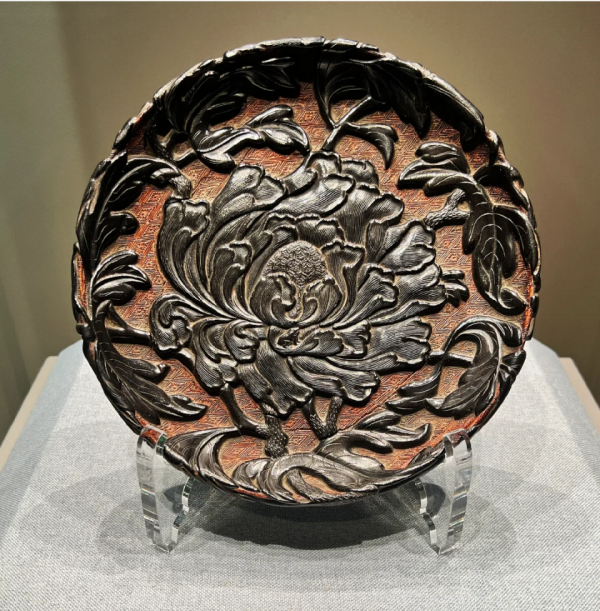
The Tang Dynasty’s passion for wearing flowers also influenced the Song Dynasty. However, during the Song Dynasty, people rarely wore large peonies. Instead, they preferred to combine smaller, more delicate flowers. If the Tang Dynasty was known for its opulence, the Song Dynasty was characterized by elegance. Although their styles differed, both dynasties had their own unique charm.
Summary
Now, when we look at various flower – wearing traditions, such as the “flower – wreath (簪花围)” fashion in Fujian, we can still see the origins of modern fashion. The Chinese people’s love for flowers is no less than that of others. The TV drama Flourished Peony tells a story that seamlessly incorporates the beauty of peony culture, from cultivation and appreciation to making friends through flowers. The show’s in – depth exploration of traditional culture is precisely why it became so popular. We hope to see more works with historical depth in the future.
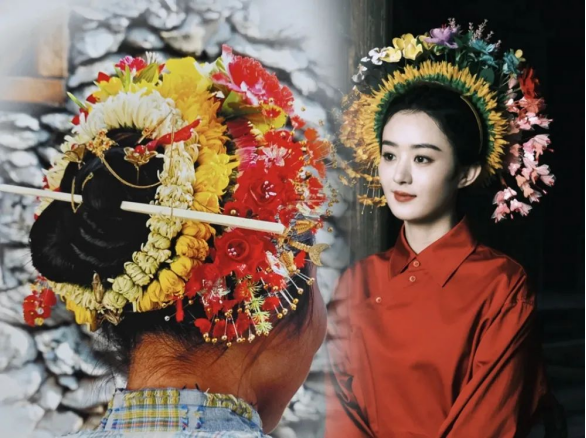
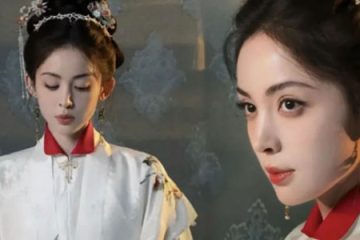
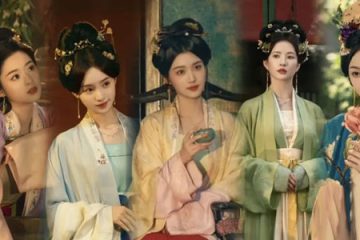
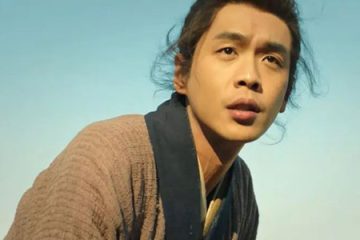
0 Comments